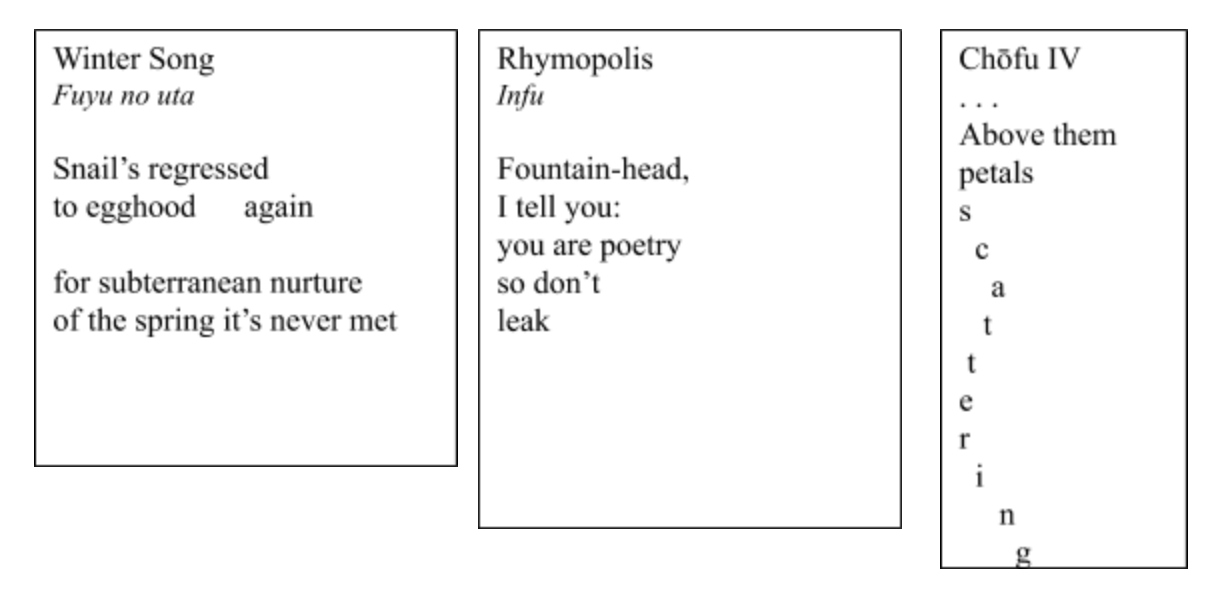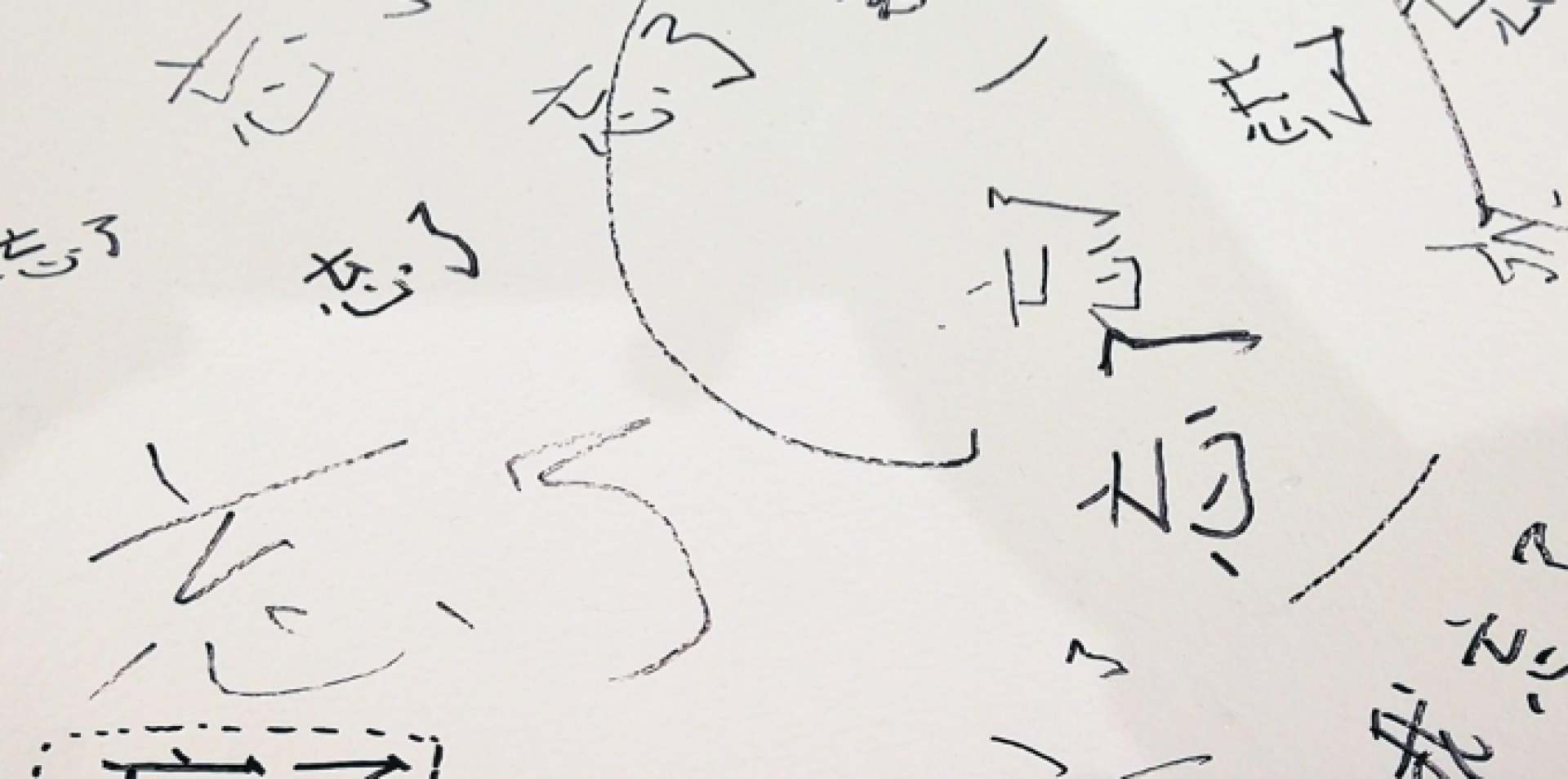by Claire Cuccio
Makoto Ōoka (author), Janine Beichman (translator), Beneath the Sleepless Tossing of the Planets: Selected Poems, Kurodahan Press, 2018. 192 pgs.

What is Poetry? #3
Precisely the process
by which all psychological scenes
proceed to total extinction
Ōoka Makoto
In the literary world, Janine Beichman is most recognised as devoted student, teacher, translator and scholar of modern Japanese poet Yosano Akiko 与謝野晶子 (1878–1942). But Beichman also enjoyed real time with the poet and critic Ōoka Makoto 大岡信 (1931–2017), who was her enduring friend and fellow scholar and translator over the course of his life.
For those who know the reaches of Ōoka’s renowned poetry, he is regarded as a distinctly modern poet infused with a sensitivity to classical Japanese literature. Prolific, vivid, humane are pointed terms that delineate his œuvre. Ōoka was also a keen critic, who went mainstream in the Asahi Shinbun, Japan’s leading newspaper, with column that ran for nearly two decades as Oriori no uta (Poems for all Seasons). The popular series featured Ōoka’s commentaries on a range of Japanese classical and contemporary poetry with interludes of verse emanating from other traditions. Upon Ōoka’s death two years ago, Beichman embraced the opportunity to spotlight Ōoka’s own poetry and engage a broader, younger readership than were exposed to an earlier edition of her translations of his work.
For this new edition, Beichman partnered with Kurodahan Press, a small but established publisher based in Kumamoto. Kurodahan’s director, Edward Lipsett, is careful in the press’ efforts to release “informative and entertaining” new translations and affordable reprints. As demonstrated by the compact volume on Ōoka, he takes a resourceful approach to publications: the translations are embellished with supplementary content and illumined with a resonant cover depicting the deep sea by Japan-based artist Michelle Zacharias. Gratitude to the press for committing to quality translations as well as image and supporting content when many publishers scrimp on such details.
What Beichman has accomplished in this volume stands overall as a model for literary translation, particularly poetry. The poems appear in a kind of flipbook format, where readers seeking the English translations can view them in standard Western style, front cover to back. Similarly, the original poems may be accessed from the “back” cover in reverse Japanese style. Their combined function invites comparative analysis, appealing to specialists who wish to refer to the translation in concert with the originals. Appreciation of Ōoka’s short poems that diversify the fixed verse of haiku and tanka (31 syllables) and of his surrealist expression is enhanced by the possibility of quick inspection of the original. No less important, this arrangement opens the door to those with limited or no Japanese proficiency to experience dimensions of the original poem—a reminder that a translation in a familiar language goes beyond, and back into, itself.
Beichman further grounds her translations with a selection of intimate photographs of Ōoka, examples of his poems featured in his own calligraphy and drafts culled from Ōoka’s personal archives. While this content may seem superfluous, these resources don’t simply exemplify Beichman’s reverence for the Japanese literary tradition and how it is constructed and preserved within Japan, but also demonstrate efforts to provide the casual reader with greater cultural context.
The preface by Ōoka’s contemporary, frequent collaborator and outstanding poet in his own right Tanikawa Shuntarō 谷川俊太郎imparts an additional authenticity and literary background that is so valuable when encountering poetry outside of its linguacultural domain. Tanikawa speaks knowingly about the scope his colleague’s lyricism. The introduction by Beichman that follows avoids biographic regurgitation, and instead, gives an attentive and moving appraisal of Ōoka’s legacy.
To reveal Ōoka’s poems, Beichman’s work bears a certain resonance with the late Mary Oliver’s A Poetry Handbook as a kind of primer on the possibilities of modern Japanese poetry—in translation. She mobilises all means to serve the individual poems, the poet and readers, by manoeuvring sound, line, verse, form, diction, tone and voice to befit the complexity of each original. At the same time, her relationship to the original language and imagery is steadfast. As Beichman articulates in the introduction to her earlier, similarly smart bilingual volume of translations from Ōoka’s Oriori no uta series, “I always try to preserve the order of images in the original. At the same time, I avoid adding words to make the meaning clearer. Such additions are a constant temptation when dealing with minimalist forms like the haiku … but they are a kind of padding and cannot help but dilute the effect of the original poem.”

Beichman proves her claim in the pure language of “Winter Song” (above left). While there is interpretive license in the selection of “regressed” and “egghood” over plainer terms, the expression is a clean reflection of Ōoka’s poem. Even “regressed” and “egghood” are precise in that the translator’s dual challenge is to convey the essence of a poem. “Rhymopolis” (above middle) deepens the task of this translator. Beichman is true to Ōoka’s text by resisting easy additions of language. At the same time, she addresses more vexing challenges of offsetting the latter half of the poem with a colon to indicate a quote and using more colloquial terms such as “so” and “don’t” to convey the soft, casual tone of Ōoka’s Japanese. Finally, the closing lines to “Chōfu IV” (above right) illustrate a brilliant stylistic means of capturing in English the visual image of scattering cherry blossoms that instinctively surfaces in the collective Japanese imagination upon reading the words “petals” and “scattering”—their fluttering downward to end in nothingness.
These are mere twitters of Ōoka’s poetic diversity, making an acknowledgment of the overall project of this new edition more encompassing: Beichman’s immersion in Ōoka’s poems, not once but twice several years apart, is a lesson in (re)experiencing great poetry. Her new work revisits Ōoka Makoto’s breadth of poems through the revisionist eye of a mature translator. In her introduction, Beichman avers, “Now that we know there will be no more new poems by Ōoka Makoto, I felt the ones we had tugging at me, as if they were asking to be heard once more.” She also celebrates the communal exchanges with the poet as well as with Donald Keene, the recently deceased indefatigable scholar and translator of Japanese literature, as each gave eye and ear to her translations. In this aspect, too, there is poetry in the beauty and grit of a translator exploring the poet’s original beyond her own interpretations, polishing what she has already mastered and circulating a worthy body of a life’s work more expansively.
![]()

Claire Cuccio is a writer, educator and curator based in Kathmandu. Trained in Japanese literature (PhD, Stanford University), her interests migrated to Asian print and papermaking culture, engaging both contemporary artists and traditional artisans. Cuccio has lectured for Kyoto Consortium for Japanese Studies (KCJS) at Doshisha University, Yokohama’s creative site BankART 1929, Beijing Foreign Languages University and Tribhuvan University. She is currently running a pilot program on cultural heritage mapping in Kathmandu and developing an intercultural program for artists, designers, engineers and other makers in traditional handcraft practices. She also collaborates with the highly respected Hong Kong Open Printshop (HKOP).
